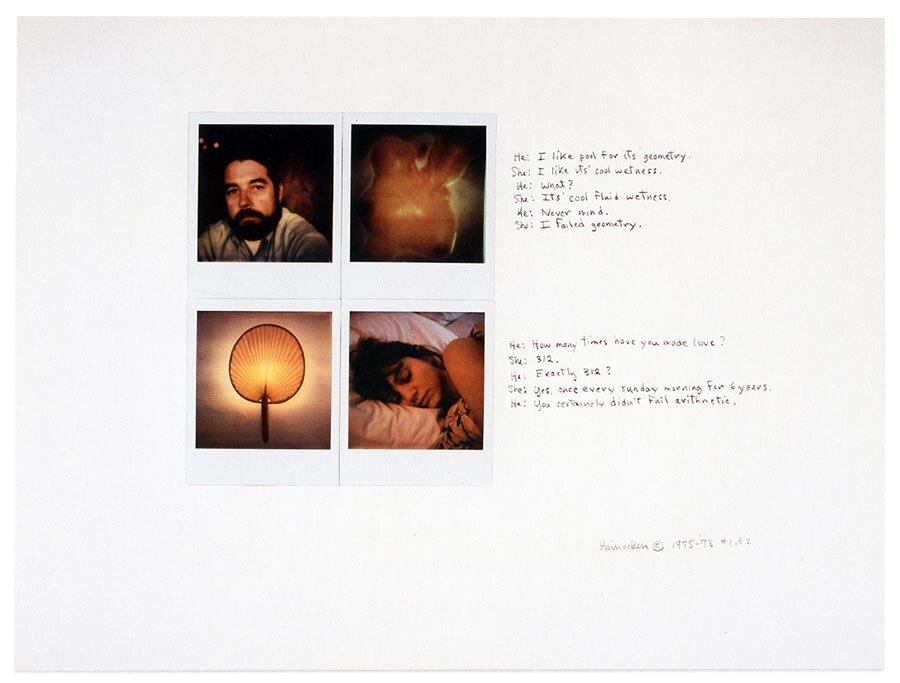Love, sex, sexuality… sometimes connected, sometimes not…
Remembering Robert Heinecken
I have always believed that to understand something, one must really need to try to understand it in relation to the time in which it happened. In this spirit, one would have to imagine the time before the internet and easy access to information:
A young and naïve undergraduate opens the January 1968, No. 1 issue of Camera magazine and reads the following statement:
“We know only what we do, what we make, what we construct: and all we construct, are realities. I call them ‘images,’ not in the Plato sense (nominally that they are only reflections of reality), but I hold that these images are reality itself and that there is no reality beyond this reality except when in our creative process we change the images: then we create new realities”
— Naum Gabo
The student then turns the page, to reveal the work of a photographer named Robert Heinecken, who creates photographs about something, not of something, and the student’s life is changed forever.
That was my experience in 1968, and it was a massive confirmation of a direction in which I had been headed for some time. It was a life-altering event. All the aesthetic and conceptual ideas that I had been exploring were validated. My work — although crude at the time — was vindicated, and not just by Heinecken’s work, but by the work of the other photographers in the issue. It was an amazing revelation to me because I was working almost in isolation, with no fine art photography contacts. I had no one to bounce ideas off of or talk to and, perhaps more importantly, no one with whom to critique.
I would later work and study with Heinecken at UCLA, as well as with other outstanding photographic artists/teachers who shared similar aesthetics; in particular Karen Truax, Judith Golden and Joyce Neimanas. They all helped to philosophically and conceptually develop my unique aesthetic.
I will admit that the similarities of our interest in ‘found’ or, my preferred term, ‘societal’ images did cause some unavoidable and sometimes negative comparisons. I was fully aware of the inevitability of this, but chose to be close to his intellectual influence regardless. From an early date, I held the philosophy that one had two choices in life: to hide something or to emphasize it. I chose to emphasize our similarities and to grow, rather than be diminished, by them.
For the sake of this discussion, I think it would be interesting to briefly compare a few pieces from two series that do exemplify this aesthetically twinned relationship. In 1978, while working on my MFA at UCLA, I used the Polaroid SX-70 camera to produce a body of work that dealt with cyclic fantasy experiences as they related to sexually-based ‘societal’ images. This was just one of many series I produced about this concept. It was simply a continuation of an ongoing exploration.
Heinecken was on leave from UCLA, teaching and working in Chicago. Unbeknownst to me, he was also working with the SX-70 camera, and it was only much later that I was privy to the parallels in our mutual exploration. The bodies of work are quite dissimilar in their intent but also quite similar their orientation. This similarity was inevitable, based on our aesthetic interests, but it was still remarkable in its perfunctory appearance.
Heinecken’s pieces are from his He/She series, directed by their selection and juxtaposition to written text. A narrative of handwritten dialogue between a man and a woman of an off-hand conversation is raised to a new level by their association with SX-70 images. This visceral reaction is heightened by the ‘instant’ gratification associated with the SX-70 picture making system. This system was designed primarily for making ‘snapshots,’ usually implying some degree of intimacy between the photographer and the subject matter. By choosing to leave the recognizable SX-70 borders on the prints, Heinecken references his process. The images in these pieces range from associative in nature to direct observation. The ‘meaning’ is derived from one’s interpretation of the relationship between the storytellers, the images shown, and the text. The content is intended to form a mental and sensory experience in the viewer, perhaps even relating to one’s own personal experiences. I have also always been intrigued by the underlying sense of humor in these images; they always made me smile when reading and viewing.



